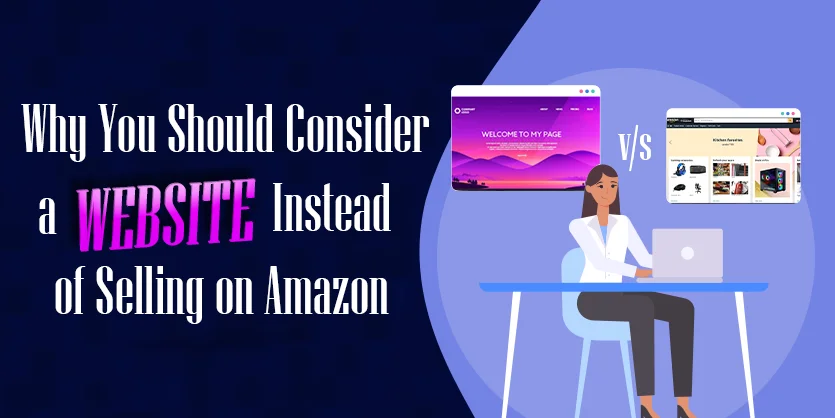In the fast-paced world of e-commerce, Amazon stands as a titan, attracting millions of sellers looking to make their mark. However, beneath the surface lies a complex web of fees and regulations that can significantly eat into your profits. As the landscape evolves, many sellers are reconsidering their strategies, and exploring alternatives that offer more control and sustainability. Let’s delve into the intricacies of selling on Amazon and why transitioning to a website might be the smarter choice for your business.
The Amazon Dilemma
Starting as a seller on Amazon seems straightforward, but the reality is far from simple. Even with the individual plan, sellers soon realize the limitations and expenses stacked against them. Upgrading to the professional plan incurs monthly subscription fees and hefty referral fees ranging from 8% to 45%, not to mention additional charges for various services.
Furthermore, Fulfillment by Amazon (FBA) presents its own set of challenges. While it offers convenience, sellers must contend with FBA fees, inventory costs, and potential reimbursements for damaged or lost items. Coupled with stringent pricing regulations and the ever-present threat of losing the Buy Box, sellers find themselves navigating a maze with limited autonomy.
The Case for a Website
Contrast this with selling on a website, where you have full control over pricing, promotions, and customer interactions. By establishing your platform, you bypass the constraints imposed by marketplaces like Amazon, empowering yourself to set your terms and build brand loyalty.
Imagine being able to adjust prices based on demand or launch targeted marketing campaigns without interference. With a website, you dictate the rules, fostering a direct connection with your audience and retaining a more significant portion of your profits.
Leveraging Social Media for Success
In today’s digital age, the rise of social commerce presents a compelling opportunity for sellers to reach customers directly. Platforms like TikTok and Facebook offer avenues for promotion and sales that circumvent traditional marketplaces’ limitations.
By integrating social media into your marketing strategy and driving traffic to your website, you can tap into a vast pool of potential customers while maintaining control over your brand image and pricing.
The Path to Sustainable Success
While Amazon remains a juggernaut in the e-commerce landscape, its increasingly stringent policies and escalating costs have prompted sellers to seek alternative paths to success. Transitioning to a website offers greater flexibility, control, and profitability, positioning your business for long-term growth and sustainability.
Conclusion
As the e-commerce landscape continues to evolve, sellers must adapt and innovate to stay ahead. While Amazon may have been the go-to platform in the past, the shifting dynamics underscore the importance of diversifying and exploring new avenues for growth. By embracing the autonomy and flexibility offered by a website and leveraging emerging trends like social commerce, sellers can chart a course towards sustainable success. It’s time to break free from the confines of traditional marketplaces and seize the opportunities that lie beyond.
If you think this post has been helpful for you, please share this post with your friends and the e-commerce community. You can also check out our website www.ecomclips.com and get more updates! Keep browsing our blog to get more articles related to e-commerce. You can also mail us at info@ecomclips.com if you need any more help with shopify.

